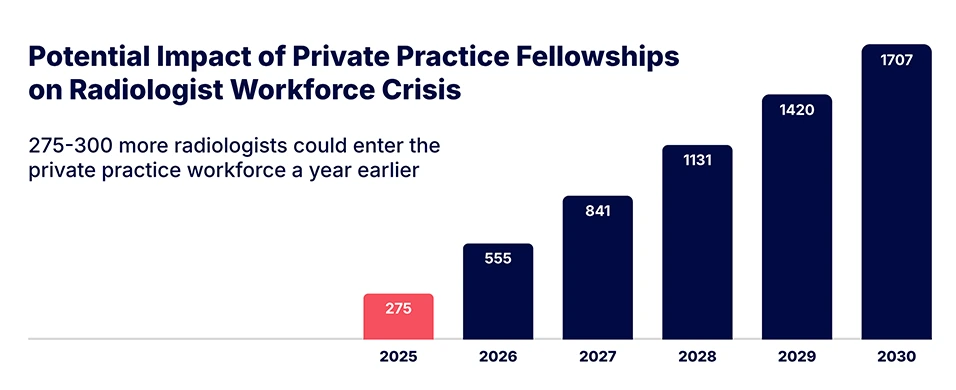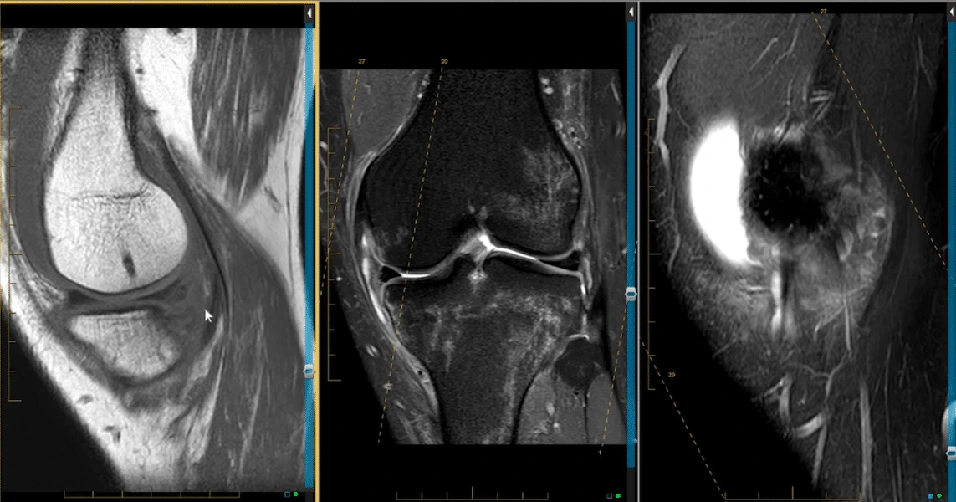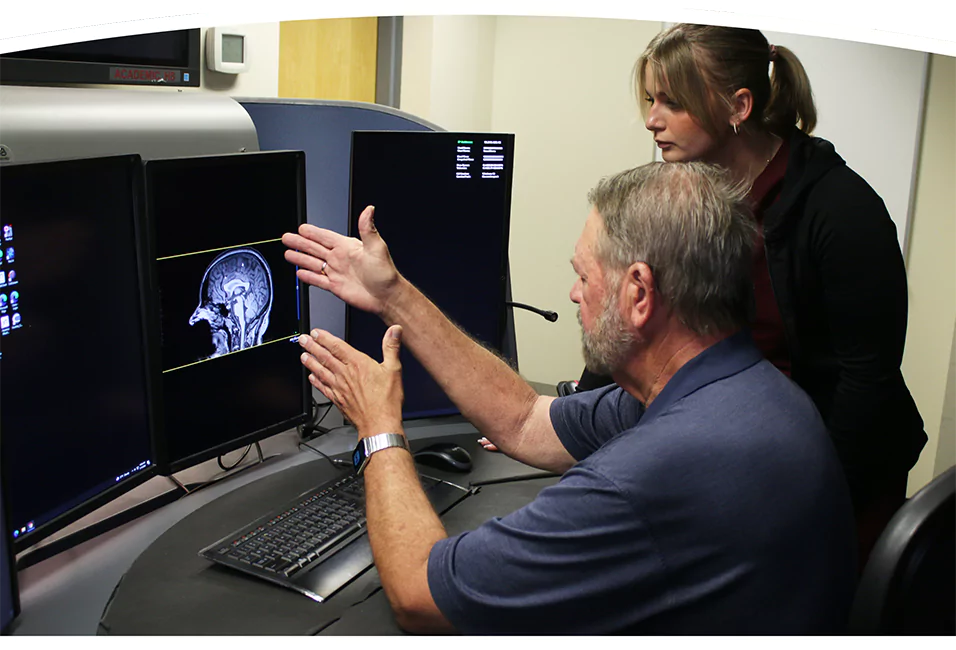Challenges for Practice Leaders Today
It is no secret that radiologists are leaving their jobs. In fact, over 41% of radiologists changed their jobs over a 4-year period, according to a recent study.1 The study included 25,228 radiologists who were associated with 4,381 practice groups across the country. Practice separation rates were 47% for multi-specialist groups as opposed to 38% for radiology-only practices.
Burnout, workload, and inability to participate in nonclinical work, such as professional development and practice building, are the primary drivers.2 But the demand for radiology and medical imaging has only increased in our post-COVID world.
Even with this uptick in demand, radiologists still say they need to focus more on nonclinical work to improve their accuracy and outcomes. In fact, 56.9% of respondents indicated that they made reading errors because they were rushed by increased workloads. This situation hurts providers and patients alike.
But what about the impact of these trends on practices and their leaders? A critical, but under-discussed, downstream impact of the Great Radiology Resignation is the impact it has on practices and practice leaders.
Private Practice As A Critical Component to Overall Radiology Landscape
Practice leaders are scrambling to protect their precious workforce. Radiology’s resignation trends are having a major impact, not just on individuals and patients, but also on practices and their leadership. But it is not too late.
The way a practice leader recruits and trains radiologists affects the entire practice – not just the radiologist. There are two primary downstream impacts when practices invest in their radiologists:
- The first is that radiologists are more likely to stay, even in this tumultuous time.
- The second is that the entire practice is able to function more efficiently and more accurately. This leads to more revenue and happier providers.
Individual vs. Practice-Level Impact of Investment in Professional Development
At the individual level, the retention of highly-trained radiologists is a good thing for the practice overall. Good retention rates can indicate radiologists are happy, they are not burnt out, and they are working productively and efficiently. More radiologists staying in their roles also means that overall morale and camaraderie are likely to be high.3
One bonafide path to improving retention and morale is to invest in radiologists’ training and professional development. By investing in radiologists’ training, practice group leaders send a message that they care about their providers’ growth, well-being, and commitment to the field. This investment improves specialty range, recruitment, and coverage.
Radiology Specialty Range and Coverage
Because of lack of supply and increased demand, radiologists in private practices must be able to pivot and read outside of their specialties. Practices no longer have the luxury of remaining siloed by specialty. This can actually benefit leaders.
With proper investment in professional development and training, especially through innovative avenues like microlearning, practice leaders can develop a nimble workforce with confidence and competence. This results in expanded practice capabilities, quicker turnaround times, and a wider breadth of offerings.
For example, a practice that may have been limited to one or two specialties, now could offer cardiac CT or breast imaging, when that practice may not have been able to before. This also means that practices may be able to solicit business from a wider range of hospitals, clinics, and outpatient centers.
Retaining and Recruiting Radiologists
Radiology business leaders try to entice highly-skilled radiologists with bonuses, extra vacation time, and wellness perks. While these tools may work in the short-term, radiologists want to work in a place where they feel that their leaders care about their growth, well-being, and satisfaction.
The most obvious and effective way to retain radiologists long-term is to offer consistent and ongoing access to training and professional development, especially in innovative ways. This approach is, often, more cost-effective for practices than ever-increasing bonuses, increased salaries and paid time off. When practice leaders invest in their providers, word spreads and the reputation of the practice grows. Over time, this allows the practice to organically attract and retain excellent providers.
Confronting the Challenges of Modern Practice Leadership
The available literature about radiologist burnout, retention, recruitment, and resignation focuses almost entirely on the impacts of these challenges on individuals. However, it is time for the imaging community, especially practice leaders and business managers, to understand the market and economic landscape, focus on the impact it has on their practices and proactively develop solutions so they can continue to grow.
[1] https://www.neimanhpi.org/press-releases/radiologists-job-changes-trends/
[2] https://healthimaging.com/topics/medical-imaging/neuroimaging/burnout-369-radiologists-early-retirement
[3] https://projectionsinc.com/abetterleader/morale-the-number-one-factor-for-employee-retention-and-productivity/




